What is the symptoms of a head concussion? Is concussion a brain injury?
Head Injuries
The brain is man's most vital possession. Recent details about organ transplants have centered on the definition of death. These discussions have emphasized that, even though the heart may continue to beat, the individual is considered dead if there is no brain activity.Nature provides a thick scalp and skull to protect the brain and further encloses it in envelopes called the meninges. Some injuries to the head may be trivial, others may be fatal.
The surgeon who is called upon to evaluate the patient with a head injury tackles the problem from within out. Damage to the brain and its envelope is most important; injury to the skull is of concern in only some instances. Bleeding from the scalp is the most apparent manifestation of injury but is the least important. Survival and the late effects of a head injury depend on the extent of the injury to the brain and not to its coverings. The best possible supportive medical crre is provided to those who will recover spontaneously. Surgery is performed in those specific instances where the mechanical effects of the injury can be meaningfully corrected by an operation.
From a practical standpoint, the entire patient, not just the head trauma, must be considered. Some have sustained associated or multiple injuries that involve the extremities, abdomen, chest or major blood vessels. Simultaneous and sequential management of injuries to each of these areas requires primary stabilization of the circulatory and respiratory function of the individual before the local problems can be tackled. For example, it is obviously necessary to institute a normal breathing circuit before one goes about correcting the broken bone or sews up the oozing scalp wound.
When are X rays required in the evaluation of a head injury?
Skull X rays are required in every case of head injury. Because of the medicolegal aspects of many of these cases, the same studies are often carried out in patients who have an injury limited to a cut scalp. No harm is done by the examination.A more specialized type of skull X ray is the cerebral arteriogram. Here the circulation of the brain is shown on an X ray obtained by injecting a dye into a major artery. Various correct diagnoses can be made by studying the distinct patterns of blood vessel changes in the damaged area. The procedure has helped in the selection of patients for various types of medical and surgical management and can distinguish the patient who has had a spontaneous stroke (intracerebral hemorrhage) and then falls and injures his head from the patient who had no antecedent brain disorder.
Recognizing the Signs and Symptoms of Concussions
What is a concussion of the brain? What can it mean later?
This is a broad term which can be variously used by different individuals. It generally refers to a temporary interruption of brain function because of a shake up of the bnin by the injury. A concussion is often associated with some form of temporary loss of memory and sometimes with subsequent headache. Concussions need not be accompanied by specific abnormal findings on examination.What is a neurological examination?
This type of physical examination evaluates the functioning of the nervous system, which includes the entire brain, the spinal cord, and the nerves coming from the latter. Each of the twelve nerves arising from the brain has a specific function, which can be tested. For example, the neurologist may evaluate the motion of the eyeballs, the size of the pupil and its reactions, the power of the muscles of facial expression, movements and position of the tongue, vision, sense of smell and hearing. External examination of the interior of the eye can reveal changes in intracranial pressure and in the structure of the blood vessels. The examination also evaluates the strength of both the arms and legs and their reflex responses to tapping and stimulation. Mental ability, memory testing and solution of simple arithmetic problems are also part of a neurologist's examination.Its purpose is to determine if there is a malfunction of the nervous system and, if so, where the defect is located and what is its most probable cause.
What is a spinal tap?
This is a diagnostic procedure performed under sterile conditions. A thin needle is inserted in the space between the two lower vertebrae to tap off the fluid that normally courses in this area. The procedure, skillfully performed, is completely painless. The examination indicates the pressure within the spinal fluid system. Examination of this fluid for blood, abnormal cells, sugar and protein can offer an indication of changes within the skull. This type of examination, which is done under very specific circumstances, is not required in all head injuries, and in certain types of head trauma it definitely should not be performed.What should be done for a youngster who jails off his bicycle and is bleeding from the scalp? He wants to go back to the playground.
All scalp injuries should be treated. The wounds require cleaning, irrigation and the removal of foreign material sand, cloth fragments and hair are the most common. These wounds usually require suturing for the control of bleeding and proper healing. The child should have a neurological examination. If this examination is completely normal, he can resume immediate activities and should be encouraged to do so. The parents should watch for any change in motion, memory, coordination, behavior and especially any unusual drowsiness. If any of these symptoms are manifested, he should be hospitalized for more detailed observation.My son, who fell off a horse at camp, now has a headache and can't remember what happened. They called us from 200 miles from here. . . . What do you advise about it?
He should be seen promptly by a physician, preferably a neurologist, who can then determine by neurological examination and study of the appropriate X rays whether the fall affected the head structures. Loss of memory of the events immediately before and after such a fall is not necessarily an indication of an important injury and is often found in individuals who show no other evidence of a head injury. If there is any concern that the injury is less than trivial, he should be taken to a hospital that has the facilities for following his progress intensively and for instituting appropriate treatment if necessary. If it turns out to be nothing but an inconsequential fall, he can go back to camp in a few days.What is the best thing to do with this boy who was hit in the head by a baseball bat? He's not bleeding, but he says he is dizzy.
It is best to place him in a hospital, where periodic, sequential observations can be carried out. X rays of the skull are required as one method of detecting a fracture. In a few days it is usually possible to tell whether or not there has been an associated brain injury. Fractures of the skull require at least three weeks of monitored observation.A person who was injured in a fight twenty days ago was all right until yesterdayf but now he's drowsy and confused and dragging one leg. What does it mean and what should we do about it?
The patient should be admitted to the hospital because of the possibility that there is a clot within the skull producing pressure on the brain. Neurological examination and X-ray studies will usually diagnose such a clot, which is called a subdural hematoma. It is not always possible to differentiate between a clot within the brain, a swelling within the brain, a clot outside the brain pressing on it, and an unrelated brain tumor, which can mimic any of the aforementioned. More elaborate diagnostic procedures may be required to make this distinction and to determine the appropriate treatment.
Even though I know that you can't now tell me what is going to happen, what are the indications, one way or the other, that the patient is getting better or worse?
The patient is presumed to be getting better if his state of consciousness becomes increasingly more active and if his mental powers are regained. Another favorable sign is an improvement in the defects that had been observed during the initial neurological examination. The patient's condition is regarded as deteriorating if the state of coma deepens and he becomes increasingly unresponsive. An increasing number and progression of existing neurologic deficits is a bad sign. Slowing of the pulse rate and a rise in blood pressure are indications that intracranial pressure is increasing. Patients have been known to remain in a relatively stationary state for days and weeks before exhibiting changes one way or the other.
What do you mean by "supportive treatment for the time being"?
During the interval when the patient is comatose and unresponsive, it is necessary to provide for the maintenance of other bodily functions. Thus he is fed either by vein or by a tube passed into the stomach. The bladder is drained by a catheter to check how his kidneys are functioning and to avoid the problem of soiling. Excessively high temperature, which appears commonly with head injuries, is controlled by lying on a cooling blanket. The breathing passages are sucked out to prevent excessive accumulation of mucus, which predisposes to poor ventilation and lung infection. It sometimes is also necessary to breathe for the patient by means of a mechanical respirator. Sedatives may be required to control restlessness or convulsive movements. These measures aid the patient's general condition and only indirectly affect the injured brain. Hence these are called supportive measures.Can the torn brain be stitched together? What is increased "brain pressure"?
The torn brain cannot be sewn together. A completely destroyed area of the brain is never replaced by exactly the same cells. Damaged areas are replaced by scar tissue which does not transmit nerve impulses.In a head injury one of the principal hazards is increased intracranial pressure, which is one cause of failure of brain function and death. Increased pressure can be due to clots outside the brain which press on it. It is like squeezing a ping-pong ball (clot) into a box that already contains a fully expanded balloon (brain). If such clots are removed, the internal pressure can be reduced. In the majority of cases, however, the unusual pressure within the skull comes from an actual swelling of the brain called cerebral edema and contusion. Here the swelling is not apart from the brain and it cannot be removed surgically. Decongestive drugs are used for the treatment of this swelling. They are not always effective, since the skull is a fixed bony cage and expansion within its confines is limited. Therefore, unrelieved excessively high pressures prove fatal.
Why does this particular fracture of the skull require surgery when the vast majority do not?
The skull may be fractured in such a way that a portion of the bone is pressed down into the brain substance for example, if one were hit on the head by a hammer. This fractured (broken) bone is depressed and the wound open to the air. Depressed and compound fractures should be corrected by elevation and/or removal of the bone fragment to avoid infection and pressure on the brain.The majority of skull fractures do not have the bony parts severely out of position. Therefore, it is not necessary to realign them or to splint them with a plaster cast. Time alone heals these patients without subsequent functional impairment. In a rare instance the scar and adhesions that follow a head injury can be the focus of subsequent (posttraumatic) convulsive seizures.
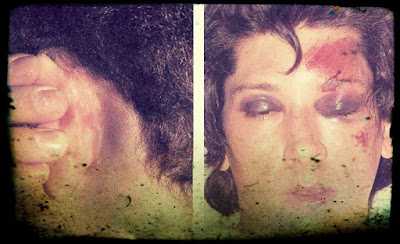
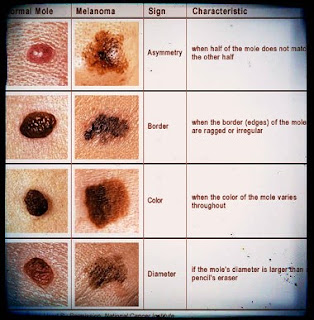
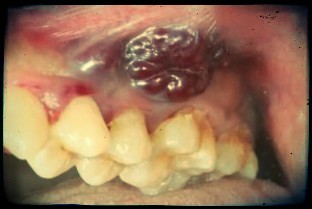
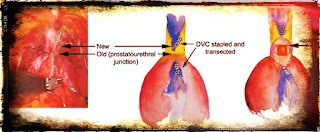
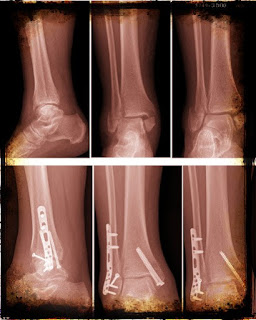
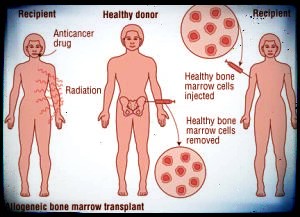

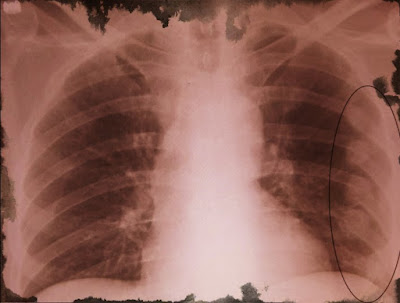
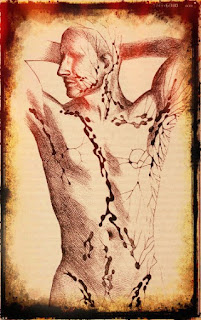

Comments
Post a Comment